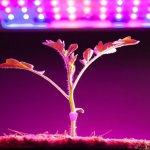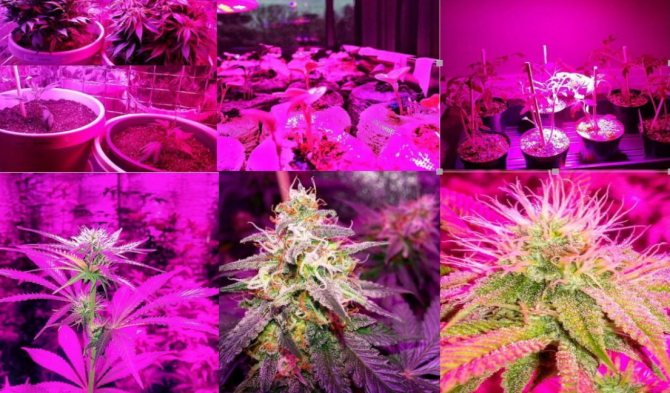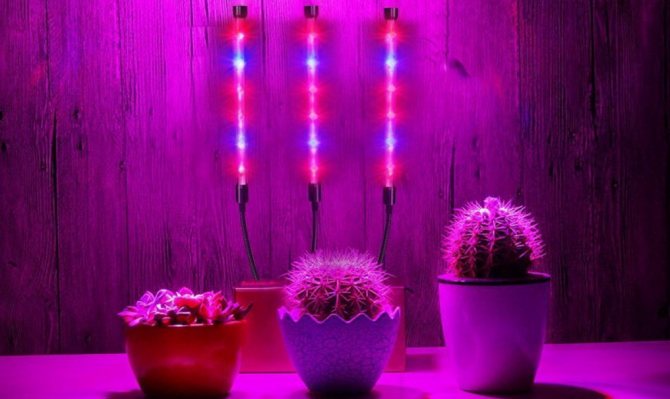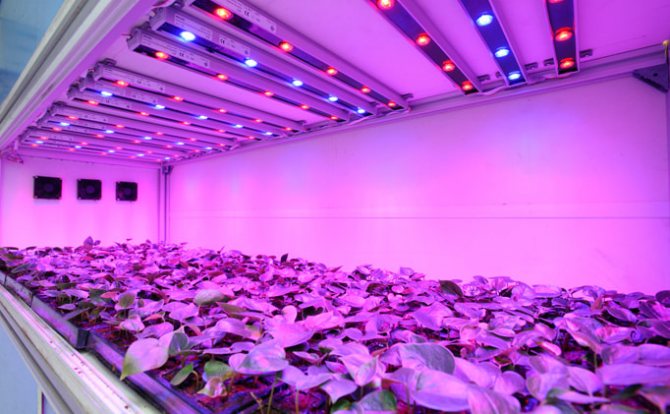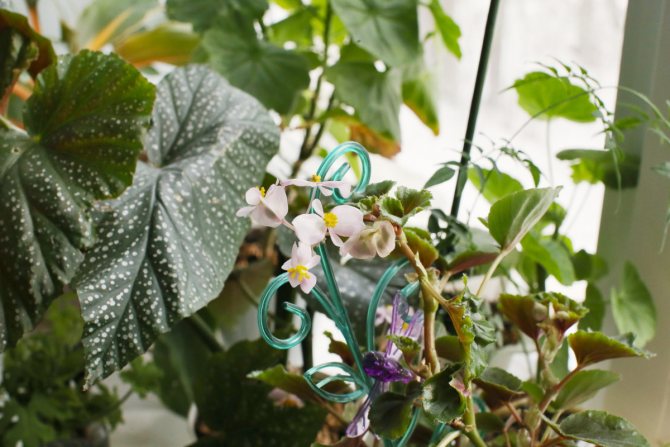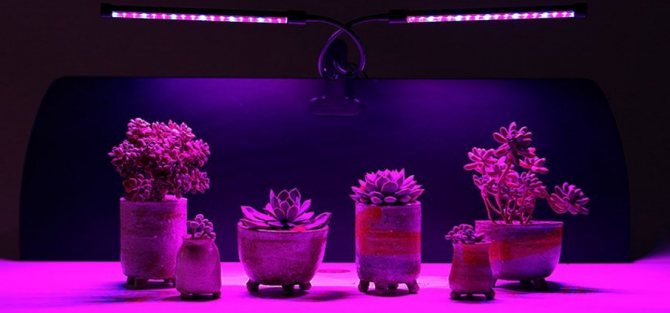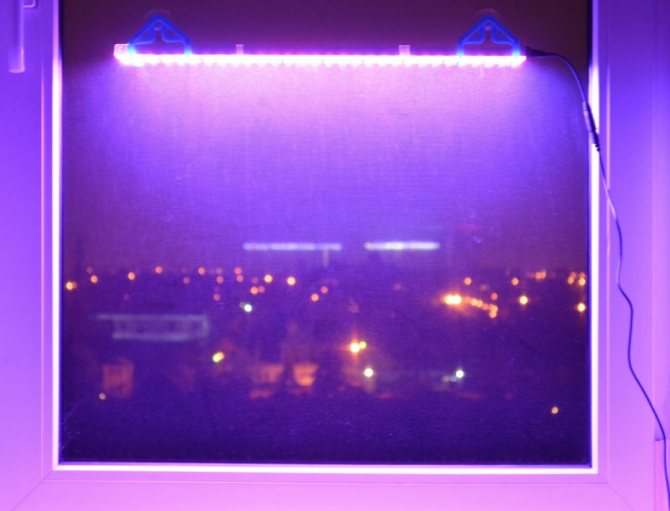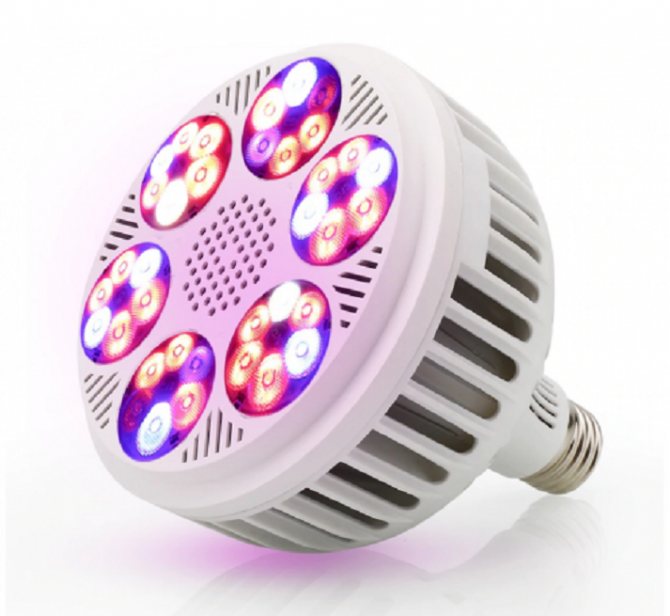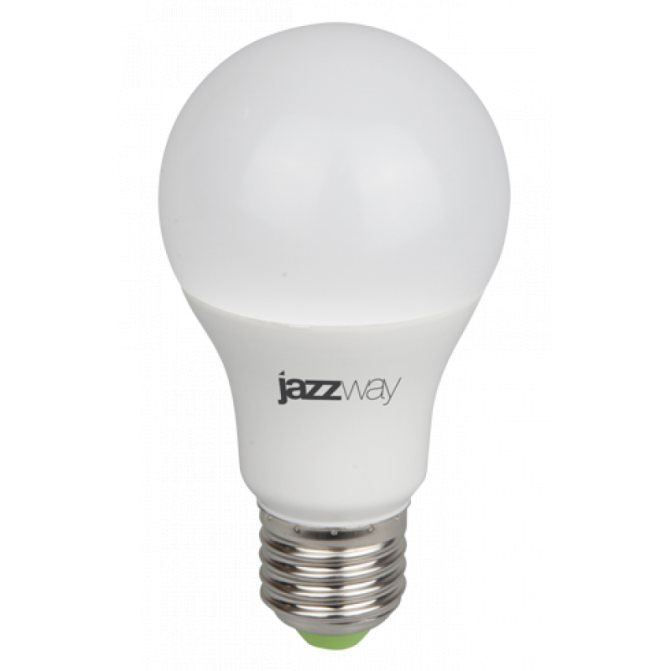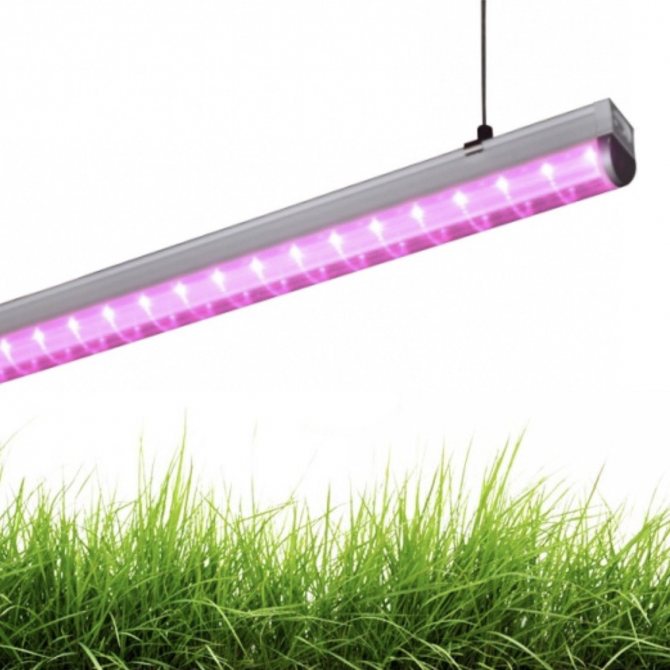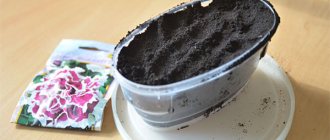Home »Reviews & Ratings
Reviews and RatingsPlanting and transplantingPlant propagation
Annie Cooper
Indoor plants often suffer from a lack of sunlight even on windowsills, they can stop blooming and die. To prevent this from happening, they are artificially illuminated with special devices. They do the same in order to grow strong, viable seedlings at home. How to choose the best phytolamp, what technical characteristics you should pay attention to, we will tell you further and present a rating of 10 reliable devices.
- Characteristics of reliable instruments
- Table: description of characteristics
- JazzWay PPG A60 AGRO 9W Е27 Frost 5002395
- NAVIGATOR 61 202 NLL-FITO-A60-10-230-E27
- Kreonix T8
- Camelion Phyto LED15-PL / BIO 15 W E27
- Lira "NPO FITOVATT"
- GR14 655mm
- Health Treasure Growing 16 W
- Perseus "NPO FITOVATT"
- Flora Lamps Е27 120w
- Garden Show Fitopanel Optimum 14 W
- Our Rating
See also: Popular plants for landscaping and decorating a nursery and kindergarten premises. Recommended and Banned (25 Photos & Videos) + Reviews
What is a phytolamp?
Phytolamp is a rather unusual lamp. Instead of the standard white-yellow backlighting, it uses a red-blue spectrum. The invention has recently conquered the market, but already now its real effectiveness has been repeatedly proven by the significant development and growth of plants in comparison with those that receive light from conventional lamps. It is used for growing flowers and fruit crops both in greenhouses and apartments.
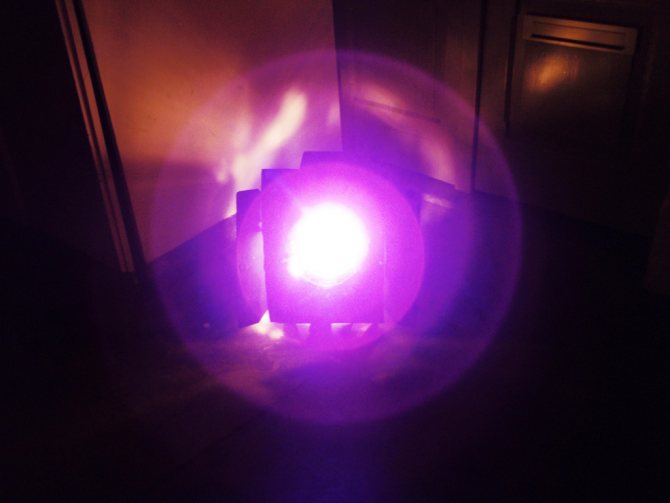
Why are red-blue colors the most effective?
Due to the blue pigment in the winter season, the plant significantly increases its growth, and in combination with warm red it becomes healthy and strong. Of course, depending on the type of plant, the spectra can change from the predominance of blue to increase growth, and vice versa, red to strengthen weak shoots.
The ideal phytolamp option is a combination of red, blue and white spectrum, which creates an almost complete imitation of sunlight. But such a device will cost much more.
Rules for the use of fluorescent lamps for plant illumination
When calculating the number and power of the lamps required for supplementary lighting, you can use the standard formula: for 1 m2 of the area of cultivated plants, on average, 5500 Lumens will be required. Thus, on a windowsill or shelf with plants 1 meter long and about 50 centimeters wide, 2750 Lumens will be needed.
That is, based on this formula, when using an Osram Fluora lamp, to illuminate such a number of seedlings, three lamps with characteristics are required: 895 cm - 30 W -1000 Lumen. But in practice, no more than two lamps are usually used for such an area, and with sufficient lighting from the street, even one can be dispensed with. Therefore, in this case, it is necessary to take into account the individual conditions of each apartment and the degree of demand for light from specific cultures.
The main signs of a lack of illumination can be called: elongated stems (lengthening of internodes), pale foliage, yellowing of the lower leaves. In this case, you can try lowering the lamp lower or add another additional lamp.
As for the lighting of indoor plants in winter, as practice shows, for tropical indoor plants (monstera, citrus fruits, philodendrons and others), one fluorescent lamp "T8" 60 cm long and 18 W at a distance of 25 cm above the flower is quite enough.
For tall palms up to two meters high, two T8 fluorescent lamps with a power of 36 W and a length of 120 cm are required. It is very useful to use a screen made of reflective materials.
When placing fluorescent lamps, it is important to install them at a height of 15-20 centimeters. The maximum distance should not exceed 30 cm from the tops of plants, since when it decreases, the luminous flux becomes much less than the declared one (a height of 30 cm reduces the luminous flux of the lamp by 30%). But it is also not worth hanging the lamp too low (less than 10 centimeters), so as not to burn the foliage. In addition, the low placement reduces the coverage area.
The operating time of the luminaire must be set based on the total daylight hours. For most plants, the duration of illumination in late autumn, winter and early spring should be 9-12 hours. For seedlings, the first time it is better to be in the light for about 16 hours. Lights must be turned off at night. A 24-hour light will not only do no good, but it will also harm the plants.
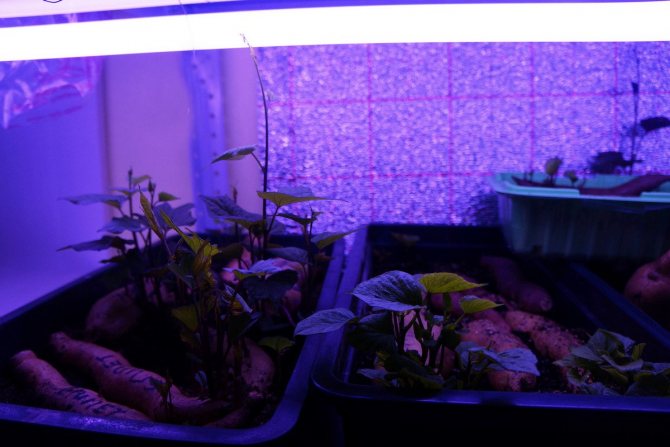

To enhance the brightness of the phytolamp, it is advisable to cover the walls of the rack with a reflective material. <людмила>
How to choose the right phytolamp
When choosing a phyto-luminaire, the following requirements should be considered:
- The lamp should not get very hot, as this leads to wilting of the leaves and promotes the evaporation of water, thereby disrupting the warm-water balance;
- The luminous flux should be stable and intense, without flickering;
- Radiation needs minimal, since ultraviolet light can negatively affect human health;
- The device must have low power consumption;
- Be convenient in installation, as well as in everyday care;
- Characterized by a long service life.
Types of phytolamps
Lamps are divided into 4 types:
- Sodium;
- Luminescent;
- Induction;
- LED.
Sodium lamps


Keep a stable range of light. The spectrum of light varies from bright orange to pale yellow, which is pleasing to the human eye, therefore it can be used not only in greenhouses, but also in small apartments.
They are not resistant to water ingress and are prone to strong overheating. If the electrical outlet is congested, the lamp may cause an explosion or fire. Therefore, families with children should prefer safer species.
Fluorescent lamps
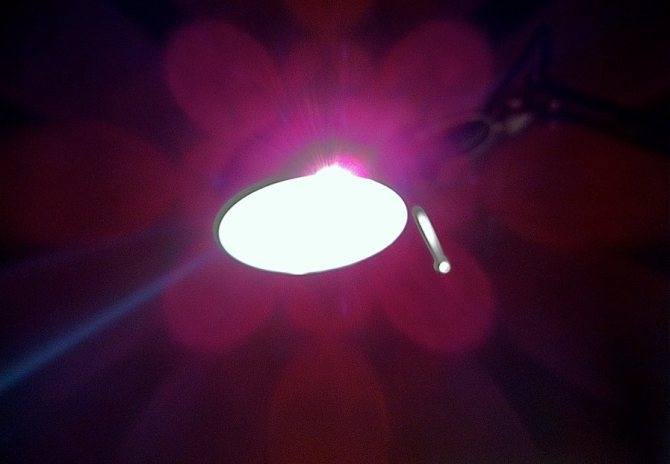

They have a long service life. Due to its high luminous efficacy, it can evenly illuminate a small greenhouse. It is a relatively budget type of phyto-lamp.
The main problem is that LEDs are bright purple or pale pink. It is quite specific, and with a long stay with it, headaches and decreased vision are provoked in a person. Therefore, for the operation of fluorescent lamps, it is worth allocating a separate room or using reflective material.
Induction lamps
The safest type of lamp. The color is intense and clear. Not subject to overheating even during network congestion. If used correctly, the service life can be up to 10 years. But do not abuse their safety and place them too close to the pots. Plants need space.
The only drawback is the high price.
LED lights.
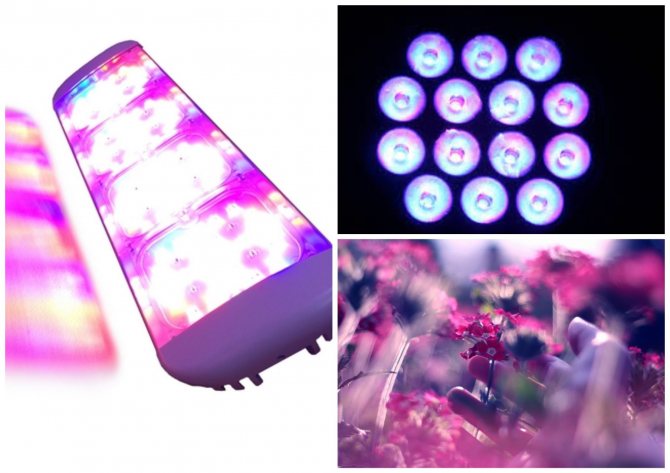

They are efficient due to their low power consumption without neglecting excellent light output. The spectrum of colors is very diverse. The most expensive type of appliances. Despite the excellent quality and long service life, it is quite an expensive pleasure.
The importance of proper lighting for plants
It would seem that supplementary lighting of plants in the room should not raise any special questions: it is worth highlighting the flower with a personal lamp and the result will be excellent. But it is not so.
For humans, light is mainly associated with certain visual sensations. With sufficient lighting, it is easier for us to navigate in space and see the details of objects, and the onset of darkness signals the need to go to bed.As for plants, for them illumination means much more, because to a certain extent they use light “for food”. In this regard, for them it is important not only the quantity, but also the quality of light.
As you know from the school course in biology, the basis of plant life is photosynthesis. As a result of this complex chemical process, water and carbon dioxide are converted into oxygen and sucrose with the participation of light, resulting in the growth of green mass. But in addition to the well-known photosynthesis, it is important to know about the existence of such a phenomenon as photomorphogenesis. In simple words, under the influence of light rays of a different spectrum, such processes as seed germination, growth of the root system, flowering and ripening of fruits are activated.
Therefore, when choosing a lamp for plant illumination, it is important to take into account the spectral composition of the light emitted by the device and take into account some other indicators. Let's try to figure out what characteristics can be used to determine whether a particular lamp is suitable for plant illumination.
Top 10 best phyto lamps for home in 2020
LED phyto-lamp Chiston-S
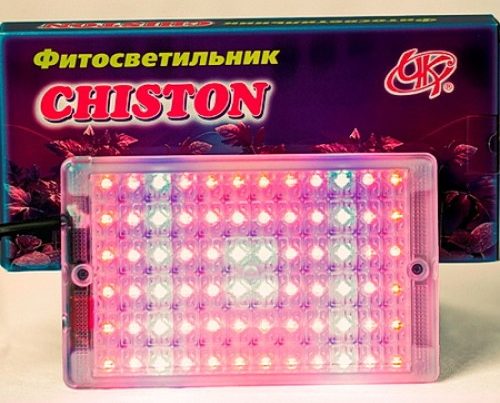

Small-sized luminaire for multi-tiered and hydroponic installations. Due to the minimal generation of heat, it can be placed almost close to the leaves, without fear of burns. Suitable for low-growing plants. The phytoset includes all the necessary racks and adapters for the shelf positioning system. The term of work is 50,000 hours. The number of LEDs is 72 spectral: 56 red and 16 blue. It should be installed at a height of 5 to 30 cm. Can be purchased for 744 rubles.
LED phyto-lamp Chiston-S
Benefits:
- Does not cause burns in close proximity;
- Economical energy consumption.
Disadvantages:
- Suitable for 1-2 plants.
Phytolamp Health treasure "GROWING lamp 16 W"
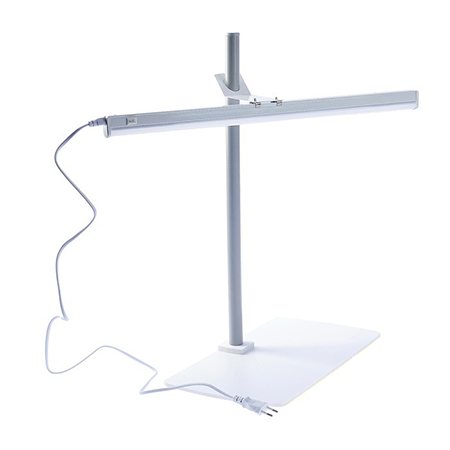

It is small in size, easily changes in height and rotates 360 degrees, so it can be used even in confined spaces and a complete lack of natural light. Fireproof and not subject to overheating. It has a pleasant red-blue spectrum for humans, while not yielding to its function of promoting active vegetation and the development of a powerful root structure. Forms healthy immunity in plants. The lamp contains 48 full-spectrum LEDs. The service life is 30,000 hours. Works without interruption in rooms with air conditions up to 85% humidity. The purchase will cost 1,700 rubles.
Phytolamp Health treasure "GROWING lamp 16 W"
Benefits:
- Convenient switch;
- Easy to assemble and does not require additional equipment;
- Economical in consumption;
- Effective at night.
Disadvantages:
- Not too reliable design;
- Small coverage of the territory.
Phyto Light Growtech 48W
Growtech specializes in lighting devices not only for growing home flowers, but also for lighting agro-industrial complexes. This species is used for growing seedlings, greenery, ornamental flowers. When working at 12-16 o'clock, an unprecedented growth and healthy strengthening of sprouts is observed, accelerates fruiting by 2 times.
It can be placed horizontally and vertically to surfaces or tied with special fasteners on a cable.
Works 50,000 hours, lighting angle 80 degrees. Price - 5,990 rubles.
Phyto Light Growtech 48W
Benefits:
- Wide coverage of the territory;
- Rapid growth and development of plants.
Disadvantages:
- Not suitable for difficult crops, such as corn;
- The cables are not included in the package.
LED phytolamp "Garden Show", 15 W.


The lamp is compact in size. Equipped with 15 LEDs: 12 red and 3 blue, which are responsible for improved photosynthesis and increase the growth and development of the plant as a whole. Has a pleasant pink-violet spectrum that does not harm human eyes. Service life - 40,000 hours.The warranty is 2 years. Can be placed close to the plant without fear of burns. It costs 2,800 rubles.
LED lamp "Garden Show", 15 W.
Benefits:
- Does not contain toxic substances;
- Resistant to damage due to its robust housing;
- Minimal heat generation;
- Suitable for growing seedlings from scratch.
Disadvantages:
- Expensive price;
- Small lighting area.
Phytolamp Minifarmer 36 Watt E27 (Full Spectrum)
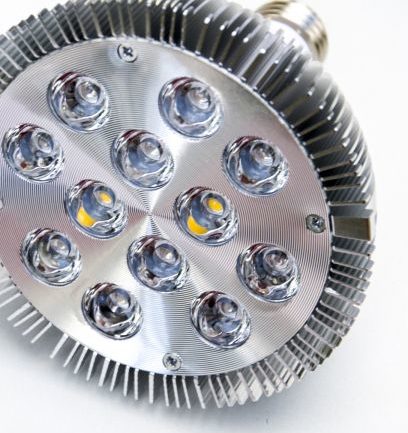

The composition includes diodes of the green, blue and red spectrum. Thanks to this combination, the lamp emits a pleasant, slightly pinkish hue, which is pleasing to the human eye. The scattering angle is 90 degrees. The luminaire is perfect for plants at different stages, creating a more versatile apparatus. Economical and does not require frequent replacement. It does not heat up, so the plants do not require frequent watering. It costs 3,200 rubles.
Phytolamp Minifarmer 36 Watt E27 (Full Spectrum)
Benefits:
- Economical;
- Universal;
- Nice calm color;
- Does not heat up;
- Compact;
- Convenient design.
Disadvantages:
- High price;
- Not suitable for seedlings from scratch.
Linear LED lamp SPB-T8-Fito
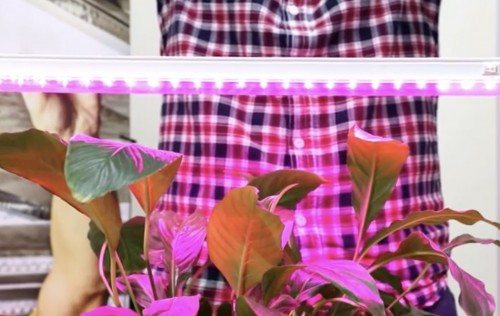

Ideal for the beginner gardener. Due to its linear shape, it is suitable for germinating seedlings or indoor flowers. Even the most capricious plants grow, as the spectrum is specially designed to strengthen and nourish the stem and bursting tops. The device generates almost no heat, which significantly saves watering. Plants practically do not get sick.
The scattering angle is 120 degrees. Performance indicators - up to 30,000 hours.
Includes two lamps, brackets and conductors to connect both lamps together. And also the necessary suspensions, fastenings, thin but strong cables. Can be attached to the ceiling or to special mounting brackets. Price - 900 rubles
Linear LED lamp SPB-T8-Fito
Benefits:
- The result is already in a month;
- Seedlings are strong and do not stretch;
- Energy saving;
- Suitable for a beginner.
Disadvantages:
- Unpleasant light;
- Short cord.
Phyto-lamp Growtech Sunlight 42W
Suitable for greenhouses and for growing home flowers. The backlight is close to sunlight. It has a sufficiently high level of protection, so it can be used in rooms with high humidity.
It can be suspended using cables or fishing line, or attached to vertical and horizontal surfaces. It can be used for additional lighting and for a complete replacement of natural light. It costs about 4 490 rubles.
The service life is 40,000 hours. 2 year warranty.
Phyto-lamp Growtech Sunlight 42W
Benefits:
- Suitable for different types of seedlings;
- Wide coverage of the territory;
- Minimal heating during long-term operation.
Disadvantages:
- Rope not included;
- Small cord.
Phytolamp Flora Lamps full spectrum E27 48 w
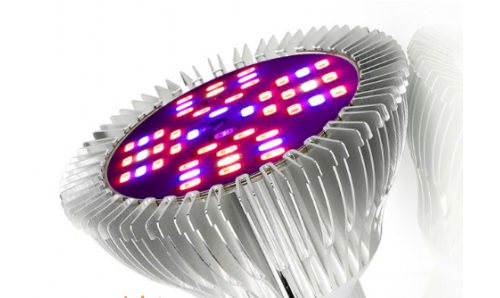

It is a lamp with a wide spectrum and a large illumination angle. Suitable for the development of all types of plants. It can be screwed into any cartridge, preferably on open luminaires, so that the heat sink passes freely. The glow angle is 120 degrees, which is much higher than some lamps with lenses. The lighting is a mixture of warm red, blue and cool white, which gives it a soft pink glow that does not interfere with human eyes. Price - 2000 rubles.
Phytolamp Flora Lamps full spectrum E27 48 w
Benefits:
- Doesn't require complicated equipment;
- Long service life;
- Lends itself to minimal heating;
- Wide angle of illumination;
- Average price.
Disadvantages:
- Has no warranty.
LED phyto-lamp Geniled Element Agro 0,5х140W Transparent


Phyto-lighting from this company contributes to the accelerated development of sprouts, their flowering and fruiting, fully compensating for the lack of light and significantly increasing the yield in winter.
Consists of 24 LEDs, of which 18 are red and 6 are blue, thereby giving preference to more universal growth and development of the root system and ripening of fruits, allowing photosynthesis to develop precisely in these intervals of the spectrum.
The body is made of aluminum alloy, which makes it resistant to mechanical damage. Service life - 50,000 hours. The warranty is 3 years. Price - 4 850 rubles.
LED phyto-lamp Geniled Element Agro 0,5х140W Transparent
Benefits:
- Does not lend itself to voltage drops;
- Overload, short circuit and overheating protection;
- Long service life;
- Increased impact resistance;
- Resistant to dust and splashing water;
- Does not contain toxic materials, environmentally friendly;
- There is no noise during operation.
Disadvantages:
- High price.
Phyto-lamp LED FITO 05-50 (WST 05-001-70-3)
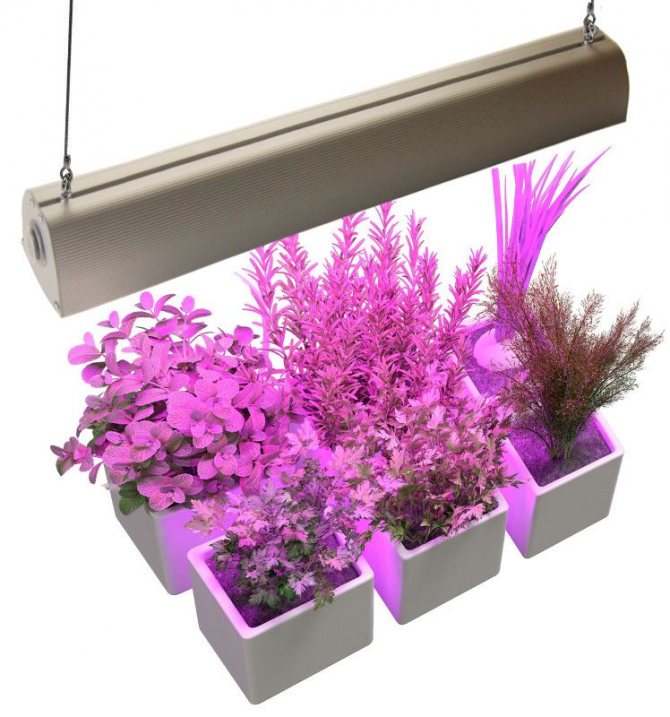

It is used both for growing home flowers and for hydroponics. Suitable for seedlings, resulting in healthy plants with developed roots, dense leaves and strong stems at any time of the year. The scattering angle extends over 1.5 sq.m. Works in two modes - vegetation and fruiting.
In the growing season, growth is effectively increased, the stem is strengthened and a healthy mass is gained. The plant does not even need additional use of nitrates.
In the fruiting mode, the balanced mode is normalized. It is especially effective after the growing season, when a grown and strengthened plant needs to adjust a further daily rhythm, close to the natural one.
The lamp contains 72 LEDs that generate less heat. Service life - 100,000 hours. 2 year warranty. The design has good heat dissipation, extending the service life. There is no cooler, so the installation is silent for the entire period of operation, increasing its reliability. Price - 2500 rubles.
Phyto-lamp LED FITO 05-50 (WST 05-001-70-3)
Benefits:
- Noiseless;
- Does not overheat;
- Economical;
- Used for all types of plants.
Disadvantages:
- Not found.
Characteristics of reliable instruments
Read also: Growing seedlings at home: tomatoes, cucumbers, peppers, eggplants, cabbage, strawberries and even petunias. All the subtleties of this issue


There are many criteria for choosing a reliable phytolamp, but the main ones are power and spectrum.
When choosing a high-quality lamp for supplementary lighting of indoor ornamental plants and growing seedlings, the following characteristics become decisive:
- Power and number of LEDs. The efficiency factor of the lamp depends on these indicators and, as a result, the viability of plants.
- Lamp shape. Linear models are suitable for window sills, basement devices for single plants
- Spectrum... For the growth and development of seedlings, light waves of optimal color and length are needed. Best of all, bicolor lamps with a peak in the red and blue sectors, as well as devices "multispectrum" and "full spectrum"
- Light wavelength ranges. For plants, 450 nm for blue and 660 nm for red are acceptable.
- Photosynthetically active radiation (or photosynthetic flux). It is measured in micromoles per second (the higher the better) and determines the rate of passage of the photosynthesis process in plants
- Beam angle. The higher the area of illumination of the surface, the more plants it will be possible to cover with one phytolamp. This also includes the level of illumination, which is measured in lux (Lx), which affects the growth and development of seedlings.
- Security level. At a low rate, the lamp will overheat and quickly fail
- Body material. The best option is aluminum, as plastic and metal heats up quickly
back to menu ↑
See also: Pansies: 10 species, a description of the process of growing from seeds in the open field and seedlings at home, the use of flowers (60+ Photos & Videos) + Reviews
Required recommendations
For the correct use of phyto-luminaires, the following recommendations must be observed:
- Before buying a lamp, it is worthwhile to study the light mode for each plant. If the heat transfer is incorrectly distributed, then you can say goodbye to the escape. Therefore, first you need to decide on the type of plant:
- light-loving people require maximum light radiation;
- for those growing in diffused light, it is worth placing the device at a certain distance;
- Shade-tolerant species should purchase a low-power lamp;
- But for those who love shade, you need to completely abandon the purchase of a lamp.
- When installing the lamp, the minimum distance to the plants should be observed - from 25 to 40 cm. Accordingly, when increasing growth, do not forget to raise it.
- When spraying shoots, avoid contact with devices. However waterproof the installation is, liquids can damage or disable the device.
- To determine the correct light effect on plants, it is worth measuring the LEDs with a special device - a luxmeter. It will measure the light wave to determine the radiation period for the plants, thereby reducing energy consumption.

